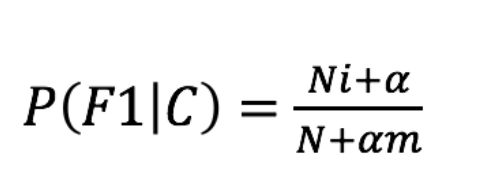十二、机器学习算法整合(knn、朴素贝叶斯、决策树、随机森林、线性回归、岭回归、逻辑回归、聚类、支持向量机)
一、需要导入的库:
'''
作者:小宇
最后完成日期:2021.2.28
包含内容:knn、朴素贝叶斯、决策树、随机森林、线性回归、岭回归、逻辑回归、聚类、支持向量机
'''
from sklearn.datasets import load_breast_cancer,load_iris,load_boston,load_digits #导入数据
from sklearn.naive_bayes import GaussianNB,MultinomialNB #朴素贝叶斯
from sklearn.model_selection import train_test_split #数据集划分
from sklearn.neighbors import KNeighborsClassifier #Knn
from sklearn.tree import DecisionTreeClassifier,export_graphviz #决策树
from sklearn.ensemble import RandomForestClassifier #随机森林
from sklearn.linear_model import LinearRegression #正则方程优化的线性回归
from sklearn.linear_model import Ridge #岭回归
from sklearn.linear_model import SGDRegressor
from sklearn.linear_model import LogisticRegression
from sklearn.cluster import KMeans
from sklearn.svm import SVC
from sklearn.feature_extraction import DictVectorizer #特征抽取
from sklearn.model_selection import GridSearchCV #网页搜索
from sklearn.metrics import accuracy_score #准确率
from sklearn.metrics import classification_report
from sklearn.metrics import mean_squared_error
from sklearn.metrics import confusion_matrix
from sklearn.preprocessing import StandardScaler
import pandas as pd
import matplotlib.pyplot as plt
import numpy as np
import random
二、k近邻:
def knn_algorithm():
'''
knn:根据邻居进行分类,常用欧式距离,还有曼哈顿等距离计算公式
优点:简单,易于理解和实现,无需训练
缺点:懒惰算法,计算量大,内存开销大,必须指定K值,
k值取小:受异常点影响
k值取大:受样本均衡影响
使用场景:小数据场景,几千~几万样本
API:sklearn.neighbors.KNeighborsClassifier(n_neighbors=5,algorithm='auto')
n_neighbors:int,可选(默认= 5),k_neighbors查询默认使用的邻居数
algorithm:{‘auto’,‘ball_tree’,‘kd_tree’,‘brute’},可选用于计算最近邻居的算法:
'''
iris = load_iris()
x = iris.data
y = iris.target
x_train,x_test,y_train,y_test = train_test_split(x,y,random_state=30,train_size =0.8)
knn = KNeighborsClassifier(n_neighbors=2,algorithm='auto')
knn.fit(x_train,y_train)
predictions = knn.predict(x_test)
print(predictions)
print(accuracy_score(y_test,predictions))
return None
三、朴素贝叶斯:
1、贝叶斯公式:

2、拉普拉斯平滑系数(防止计算出的概率为0的情况):

def pbaye_algorithm():
'''
朴素贝叶斯:假定事件之间相互独立,使用贝叶斯公式对样本进行计算,常用拉普拉斯平滑系数消除由于数据集有限导致概率为0的情况;
优点:1)有有稳定的分类效率;2)对缺失数据不太敏感,算法简单;3)分类准确度高,速度快
缺点:特征属性有关联时其效果不好
应用:常用语文本分类等
API:sklearn.naive_bayes.MultinomialNB(alpha = 1.0)
alpha:拉普拉斯平滑系数
'''
datal = load_breast_cancer()
x_train,x_test,y_train,y_test = train_test_split(datal['data'],datal['target'],random_state = 20,train_size = 0.8)
pbaye = MultinomialNB()
pbaye.fit(x_train,y_train)
pred = pbaye.predict(x_test)
print(accuracy_score(y_test,pred))
print(confusion_matrix(y_test,pred))
print(classification_report(y_test,pred))
return None
四、决策树
def decisionc():
'''
决策树:1)信息熵:衡量不确定性的大小;2)条件熵H(D|A),条件A下的信息熵;3)信息增益:不确定性减少的程度
优点:简单,树木可视化;
缺点:数过于复杂时,过拟合。
改进:1)减枝cart算法;
2)随机森林
应用:个人信用评估等
API:class sklearn.tree.DecisionTreeClassifier(criterion=’gini’, max_depth=None,random_state=None)
决策树分类器
criterion:默认’gini’系数,可选择信息增益的熵’entropy’
max_depth:树的深度大小
random_state:随机数种子
max_depth:树的深度大小
'''
iris = datasets.load_iris()
x_train,x_test,y_train,y_test = train_test_split(iris.data,iris.target,random_state=20,train_size=0.8)
cls = DecisionTreeClassifier(criterion='entropy')
cls.fit(x_train,y_train)
pred = cls.predict(x_test)
print(accuracy_score(y_test,pred))
print(confusion_matrix(y_test,pred))
print(classification_report(y_test,pred))
#产生决策树,将得到的文本复制至:http://webgraphviz.com/可得到树
data_l = export_graphviz(cls,out_file='tree.dot',feature_names=iris.feature_names)
return None
五、随机森林:
def random_forest():
'''
随机森林:随机森林是一个包含多个决策树的分类器,并且其输出的类别是由个别树输出的类别的众数而定。
优点:1)具有极好的准确率;2)能够有效地运行在大数据集上;3)处理具有高维特征的输入样本,无需要降维就能够评估各个特征在分类问题上的重要性。
API:class sklearn.ensemble.RandomForestClassifier(n_estimators=10, criterion=’gini’, max_depth=None, bootstrap=True, random_state=None, min_samples_split=2)
随机森林分类器
n_estimators:integer,optional(default = 10)森林里的树木数量120,200,300,500,800,1200
criteria:string,可选(default =“gini”)分割特征的测量方法
max_depth:integer或None,可选(默认=无)树的最大深度 5,8,15,25,30
max_features="auto”,每个决策树的最大特征数量
If "auto", then max_features=sqrt(n_features).
If "sqrt", then max_features=sqrt(n_features) (same as "auto").
If "log2", then max_features=log2(n_features).
If None, then max_features=n_features.
bootstrap:boolean,optional(default = True)是否在构建树时使用放回抽样
min_samples_split:节点划分最少样本数
min_samples_leaf:叶子节点的最小样本数
'''
titan = pd.read_csv('titanic.csv')
x = titan[['pclass', 'age', 'sex']]
y = titan['survived']
#print(x['age'])
x['age'].fillna(x['age'].mean(), inplace=True)
#print(x['age'])
dict = DictVectorizer(sparse=False)
#转化成字典并进行特征抽取
x = dict.fit_transform(x.to_dict(orient="records"))
x_train, x_test, y_train, y_test = train_test_split(x, y, test_size=0.3)
rs = RandomForestClassifier()
#下面使用网格搜索
param = {
"n_estimators": [120, 200, 300, 500, 800, 1200], "max_depth": [5, 8, 15, 25, 30]}
rs = GridSearchCV(rs, param_grid=param, cv=3)
rs.fit(x_train, y_train)
pred = rs.predict(x_test)
print(accuracy_score(y_test,pred))
return None
六、线性回归:
def line_regression():
'''
线性回归:一个自变量称为单变量回归,多个自变量称为多元回归。找到最小损失,优化方法有正规方程和梯度下降两种方式
API1(正规方程):sklearn.linear_model.LinearRegression(fit_intercept=True)此为通过正规方程优化
fit_intercept:是否计算偏置
LinearRegression.coef_:回归系数
LinearRegression.intercept_:偏置
API2(梯度下降):sklearn.linear_model.SGDRegressor(loss="squared_loss", fit_intercept=True, learning_rate ='invscaling', eta0=0.01)
SGDRegressor类实现了随机梯度下降学习,它支持不同的loss函数和正则化惩罚项来拟合线性回归模型。
loss:损失类型
loss=”squared_loss”: 普通最小二乘法
fit_intercept:是否计算偏置
learning_rate : string, optional
学习率填充
'constant': eta = eta0
'optimal': eta = 1.0 / (alpha * (t + t0)) [default]
'invscaling': eta = eta0 / pow(t, power_t)
power_t=0.25:存在父类当中
对于一个常数值的学习率来说,可以使用learning_rate=’constant’ ,并使用eta0来指定学习率。
SGDRegressor.coef_:回归系数
SGDRegressor.intercept_:偏置
'''
data = load_boston()
x_train, x_test, y_train, y_test = train_test_split(data.data, data.target, test_size=0.3, random_state=24)
std_x = StandardScaler()
x_train = std_x.fit_transform(x_train)
x_test = std_x.transform(x_test)
std_y = StandardScaler()
y_train = std_y.fit_transform(y_train.reshape(-1,1))
y_test = std_y.transform(y_test.reshape(-1,1))
# 梯度下降进行预测
lin = SGDRegressor()
lin.fit(x_train, y_train)
pre = lin.predict(x_test)
print("权重:", lin.coef_)
print("偏执:", lin.intercept_)
print("预测结果:",pre)
a = [x for x in range(len(pre))]
plt.plot(a,pre,color = 'red')
plt.plot(a,y_test,color = 'yellow')
plt.show()
七、岭回归
def lin_regression():
'''
岭回归:一种线性回归,在回归时加上正则化限制,解决过拟合现象。有L1和L2两种正则化方法,常用L2方法。正则化力度越大,权重系数越小,正则化力度越小,权重系数越大;
L2正则化API:sklearn.linear_model.Ridge(alpha=1.0, fit_intercept=True,solver="auto", normalize=False)
具有l2正则化的线性回归
alpha:正则化力度,也叫λ,λ取值:0~1 1~10
solver:会根据数据自动选择优化方法
sag:如果数据集、特征都比较大,选择该随机梯度下降优化
normalize:数据是否进行标准化
normalize=False:可以在fit之前调用preprocessing.StandardScaler标准化数据
Ridge.coef_:回归权重
Ridge.intercept_:回归偏置
'''
data = load_boston()
x_train, x_test, y_train, y_test = train_test_split(data.data, data.target, test_size=0.3, random_state=24)
std_x = StandardScaler()
x_train = std_x.fit_transform(x_train)
x_test = std_x.transform(x_test)
std_y = StandardScaler()
y_train = std_y.fit_transform(y_train.reshape(-1, 1))
y_test = std_y.transform(y_test.reshape(-1, 1))
rd = Ridge(alpha=1.0)
rd.fit(x_train, y_train)
print("岭回归的权重参数为:", rd.coef_)
y_rd_predict = std_y.inverse_transform(rd.predict(x_test))
print("岭回归的预测的结果为:", y_rd_predict)
print("岭回归的均方误差为:", mean_squared_error(y_test, y_rd_predict))
八、逻辑回归
def logic_regression():
'''
逻辑回归:逻辑回归时解决二分类问题的利器,其输入为一个线性回归的结果。
API:sklearn.linear_model.LogisticRegression(solver='liblinear', penalty=‘l2’, C = 1.0)
solver:优化求解方式(默认开源的liblinear库实现,内部使用了坐标轴下降法来迭代优化损失函数)
sag:根据数据集自动选择,随机平均梯度下降
penalty:正则化的种类
C:正则化力度
分类评估API:sklearn.metrics.classification_report(y_true, y_pred, labels=[], target_names=None )
y_true:真实目标值
y_pred:估计器预测目标值
labels:指定类别对应的数字
target_names:目标类别名称
return:每个类别精确率与召回率
相关概念:精准率:召回率:准确率:
应用:广告点击率;是否为垃圾邮件;是否患病;金融诈骗;虚假账号
'''
data = load_breast_cancer()
x_train,x_test,y_train,y_test = train_test_split(data.data,data.target,random_state=30,train_size=0.8)
lg = LogisticRegression()
lg.fit(x_train,y_train)
pre = lg.predict(x_test)
print(confusion_matrix(y_test,pre))
九、聚类(k-means):
def kmeanss():
'''
聚类:
API:sklearn.cluster.KMeans(n_clusters=8,init=‘k-means++’)
k-means聚类
n_clusters:开始的聚类中心数量
init:初始化方法,默认为'k-means ++’
labels_:默认标记的类型,可以和真实值比较(不是值比较)
轮廓系数评估API:sklearn.metrics.silhouette_score(X, labels)
计算所有样本的平均轮廓系数
X:特征值
labels:被聚类标记的目标值
'''
x1 = np.array([1, 2, 3, 1, 5, 6, 5, 5, 6, 7, 8, 9, 9])
x2 = np.array([1, 3, 2, 2, 8, 6, 7, 6, 7, 1, 2, 1, 3])
# x = np.array(list(zip(x1,x2)).reshape(len(x1),2))
x = np.array(list(zip(x1, x2)))
plt.figure(figsize=(10, 10))
plt.xlim([0, 10])
plt.ylim([0, 10])
plt.title('sample')
plt.scatter(x1, x2)
plt.show()
kmeans_model = KMeans(n_clusters=3).fit(x)
colors = ['b', 'g', 'r']
markers = ['o', '^', '+']
for i, j in enumerate(kmeans_model.labels_):
plt.plot(x[i], x2[i], colors=colors[j], markers=markers[j], ls='None')
plt.xlim([0, 10])
plt.ylim([0, 10])
plt.show()
print(x)
十、支持向量机(svm):
def svmm():
'''
支持向量机(完善):用超平面对高纬空间中的样本进行分类,为了解决线性不可分问题,引入了核函数,常用核函数有线性核函数、多项式核函数、高斯核函数和sigmoid核函数
API:sklearn.svm.SVC(C=1.0, kernel='rbf', degree=3, gamma='auto', coef0=0.0, shrinking=True,
probability=False, tol=0.001, cache_size=200, class_weight=None,
verbose=False, max_iter=-1, decision_function_shape='ovr',
random_state=None)
C (float参数 默认值为1.0):惩罚项系数
kernel (str参数 默认为‘rbf’):核函数选择(linear:线性核函数,poly:多项式核函数,rbf:径像核函数/高斯核,sigmod:sigmod核函数,precomputed:核矩阵)
degree (int型参数 默认为3):只对'kernel=poly'(多项式核函数)有用,是指多项式核函数的阶数n,如果给的核函数参数是其他核函数,则会自动忽略该参数。
gamma (float参数 默认为auto):如果gamma设置为auto,代表其值为样本特征数的倒数,即1/n_features,也有其他值可设定。
coef0:(float参数 默认为0.0):核函数中的独立项,只有对‘poly’和‘sigmod’核函数有用,是指其中的参数c。
probability( bool参数 默认为False):是否启用概率估计。
shrinkintol: float参数 默认为1e^-3g(bool参数 默认为True):表示是否选用启发式收缩方式。
tol( float参数 默认为1e^-3):svm停止训练的误差精度,也即阈值。
cache_size(float参数 默认为200):指定训练所需要的内存,以MB为单位。
class_weight(字典类型或者‘balance’字符串。默认为None):该参数表示给每个类别分别设置不同的惩罚参数C,如果没有给,则会给所有类别都给C=1,即前面参数指出的参数C。如果给定参数‘balance’,则使用y的值自动调整与输入数据中的类频率成反比的权重。
verbose ( bool参数 默认为False):是否启用详细输出。
max_iter (int参数 默认为-1):最大迭代次数,-1表示不受限制。
random_state(int,RandomState instance ,None 默认为None):随机数种子
'''
daj = load_digits()
images = daj.images
labels = daj.target
n_samples = len(images)
image_vectors = images.reshape((n_samples,-1))
sample_index = list(range(n_samples))
test_size = int(n_samples*2)
random.shuffle(sample_index)
train_index,test_index = sample_index[test_size:],sample_index[:test_size]
x_train,y_train = image_vectors[train_index],labels[train_index]
x_test, y_test = image_vectors[test_index], labels[test_index]
classifier = SVC(kernel='rbf',C=1.0,gamma=0.001)
classifier.fit(x_train,y_train)
pre = classifier.predict(x_test)
print(classification_report(y_test,pre))
print(confusion_matrix(y_test,pre))



